Sulfometuron-methyl
- CAS NO.:74222-97-2
- Empirical Formula: C15H16N4O5S
- Molecular Weight: 364.38
- MDL number: MFCD00128060
- EINECS: 277-780-6
- SAFETY DATA SHEET (SDS)
- Update Date: 2024-12-18 14:08:52
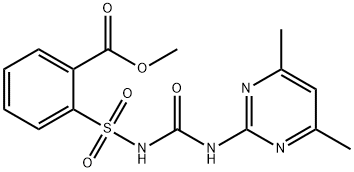
What is Sulfometuron-methyl?
Chemical properties
The prodrug is white solid. m.p. 203~205℃, vapor pressure 7.39×10-14Pa, relative density 1.48. At 25℃, the solubility is: acetone 2.4g/kg, acetonitrile 1.5g/kg, ethanol 137mg/kg, ether 32mg/kg, xylene 37mg/kg, water 8mg/L (pH=5), 70mg/L (pH =7). The partition coefficient was 0.31 (pH=7). The hydrolysis half-life of the aqueous suspension was 18d at pH=5, and it was stable at pH=7-9. The half-life in soil was about 28d.
The Uses of Sulfometuron-methyl
Herbicide.
What are the applications of Application
Sulfometuron methyl is a substituted pyrimide compound for proteomics research
Definition
ChEBI: Sulfometuron methyl is a benzoate ester that is the methyl ester of 2-{[(4,6-dimethylpyrimidin-2-yl)carbamoyl]sulfamoyl}benzoic acid. It has a role as a herbicide and an EC 2.2.1.6 (acetolactate synthase) inhibitor. It is a member of pyrimidines, a benzoate ester and a N-sulfonylurea. It is functionally related to a sulfometuron.
Preparation
Sulfometuron-methyl is produced by reaction of 2-sulfonylisocyanate methylbenzoate with 2-amino-4,6-dimethylpyrimidine.
Agricultural Uses
Herbicide: Used to control annual and perennial grasses and broadleaf weeds on landscapes, rights-of-ways, fence rows, forests, industrial structure areas and non-crop land. Not listed for use in EU countries. Registered for use in the U.S.
Trade name
DPX-T5648®; KNOCKOUT®; LANDMARK® MP (sulfometuron-methyl + chlorsulfuron); OUST®; OUSTAR®; RIVERDALE®; STAMPRO®
Environmental Fate
Soil. In unsterilized soils, 58% of 14C-labeled sulfometuron-methyl degraded after 24
weeks. Metabolites identified were 2,3-dihydro-3-oxobenzisosulfonazole (saccharin),
methyl-2-(aminosulfonyl)benzoate, 2-aminosulfonyl benzoic acid, 2-(((aminocarbonyl)amino)sulfonyl)benzoate and [14C]carbon dioxide. The rate of degradation in aerobic
soils was primarily dependent upon pH and soil type (Anderson and Dulka, 1985). The
reported half-life in soil was approximately 4 weeks (Hartley and Kidd, 1987).
Chemical/Physical. Sulfometuron-methyl is stable in water at pH values of 7 to 9 but
is rapidly hydrolyzed at pH 5.0 forming methyl 2-(aminosulfonyl)benzoate and saccharin.
When sulfometuron-methyl in an aqueous solution was exposed to UV light (λ = 300–400
nm), it degraded to the intermediate methyl benzoate which then mineralized to carbon
dioxide (Harvey et al., 1985). The hydrolysis half-lives of metsulfuron-methyl at pH 5
and 25 and 45°C were 33 and 2.1 days, respectively. At pH 7 and 45°C, the hydrolysis
half-life is 33 days (Beyer et al., 1988).
Metabolic pathway
Sulfometuron methyl is relatively stable at neutral and basic pH and undergoes cleavage of the sulfonylurea linkage to yield methyl-2-(aminosulfonyl)benzoate and 4,6-dimethyl-2-aminopyrimidine as major hydrolysis products, and saccharin as the terminal product. These products are also observed as major degradation products in soils. In plants, monohydroxymethylsulfometuron methyl is the primary metabolite which is also identified as a mammalian and soil metabolite and undergoes further degradation by mammals to give 2-amino-4-hydroxymethyl-6- methylpyrimidine.
Properties of Sulfometuron-methyl
| Melting point: | 203-205°C |
| Boiling point: | 197°C (rough estimate) |
| Density | 1.48 |
| refractive index | 1.6000 (estimate) |
| pka | 5.7(at 25℃) |
| form | neat |
| CAS DataBase Reference | 74222-97-2(CAS DataBase Reference) |
| EPA Substance Registry System | Sulfometuron methyl (74222-97-2) |
Safety information for Sulfometuron-methyl
| Signal word | Warning |
| Pictogram(s) |
 Environment GHS09 |
| GHS Hazard Statements |
H400:Hazardous to the aquatic environment, acute hazard |
| Precautionary Statement Codes |
P273:Avoid release to the environment. P391:Collect spillage. Hazardous to the aquatic environment P501:Dispose of contents/container to..… |
Computed Descriptors for Sulfometuron-methyl
New Products
Tert-butyl bis(2-chloroethyl)carbamate 4-Methylphenylacetic acid N-Boc-D-alaninol N-BOC-D/L-ALANINOL N-octanoyl benzotriazole 3-Morpholino-1-(4-nitrophenyl)-5,6-dihydropyridin- 2(1H)-one Furan-2,5-Dicarboxylic Acid DIETHYL AMINOMALONATE HYDROCHLORIDE 1,1’-CARBONYLDIIMIDAZOLE R-2-BENZYLOXY PROPIONIC ACID 1,1’-CARBONYLDI (1,2-4 TRIAZOLE) N-METHYL INDAZOLE-3-CARBOXYLIC ACID (2-Hydroxyphenyl)acetonitrile 4-Bromopyrazole 5-BROMO-2CYANO PYRIDINE 5,6-Dimethoxyindanone 5-broMo-2-chloro-N-cyclopentylpyriMidin-4-aMine 2-(Cyanocyclohexyl)acetic acid 4-methoxy-3,5-dinitropyridine 1-(4-(aminomethyl)benzyl)urea hydrochloride 2-aminopropyl benzoate hydrochloride diethyl 2-(2-((tertbutoxycarbonyl)amino) ethyl)malonate tert-butyl 4- (ureidomethyl)benzylcarbamate Ethyl-2-chloro((4-methoxyphenyl)hydrazono)acetateRelated products of tetrahydrofuran
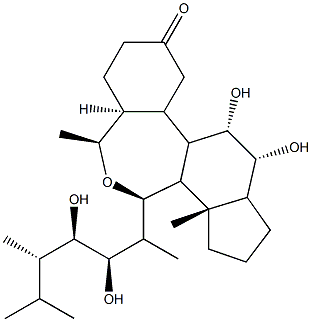
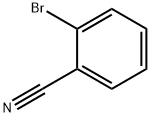

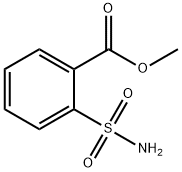

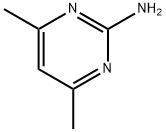
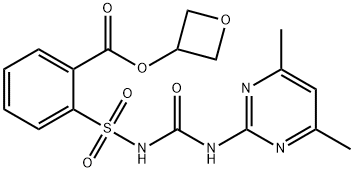
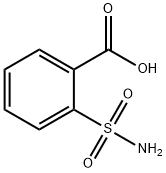
You may like
-
 Sulfometuron methyl ester 98% (HPLC) CAS 74222-97-2View Details
Sulfometuron methyl ester 98% (HPLC) CAS 74222-97-2View Details
74222-97-2 -
 Sulfometuron methyl CAS 74222-97-2View Details
Sulfometuron methyl CAS 74222-97-2View Details
74222-97-2 -
 1975-50-4 98%View Details
1975-50-4 98%View Details
1975-50-4 -
 2-HYDROXY BENZYL ALCOHOL 98%View Details
2-HYDROXY BENZYL ALCOHOL 98%View Details
90-01-7 -
 2-Chloro-1,3-Bis(Dimethylamino)Trimethinium Hexafluorophosphate 221615-75-4 98%View Details
2-Chloro-1,3-Bis(Dimethylamino)Trimethinium Hexafluorophosphate 221615-75-4 98%View Details
221615-75-4 -
 14714-50-2 (2-Hydroxyphenyl)acetonitrile 98+View Details
14714-50-2 (2-Hydroxyphenyl)acetonitrile 98+View Details
14714-50-2 -
 118753-70-1 98+View Details
118753-70-1 98+View Details
118753-70-1 -
 733039-20-8 5-broMo-2-chloro-N-cyclopentylpyriMidin-4-aMine 98+View Details
733039-20-8 5-broMo-2-chloro-N-cyclopentylpyriMidin-4-aMine 98+View Details
733039-20-8